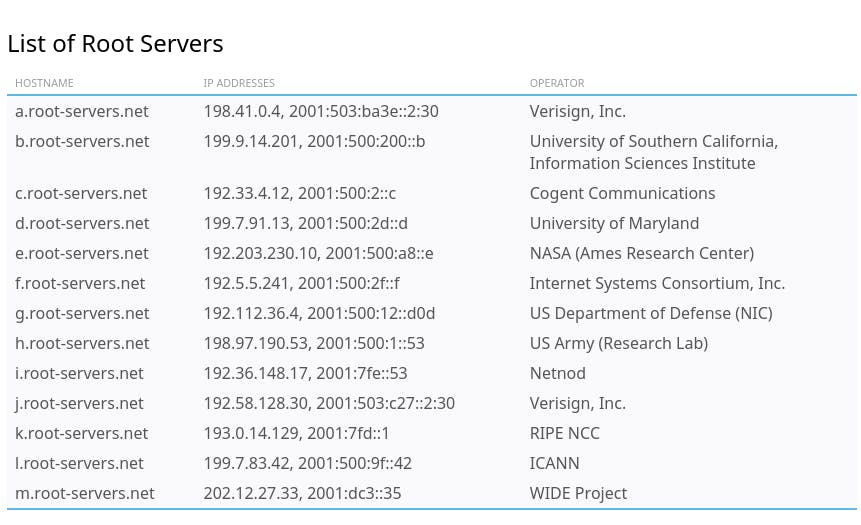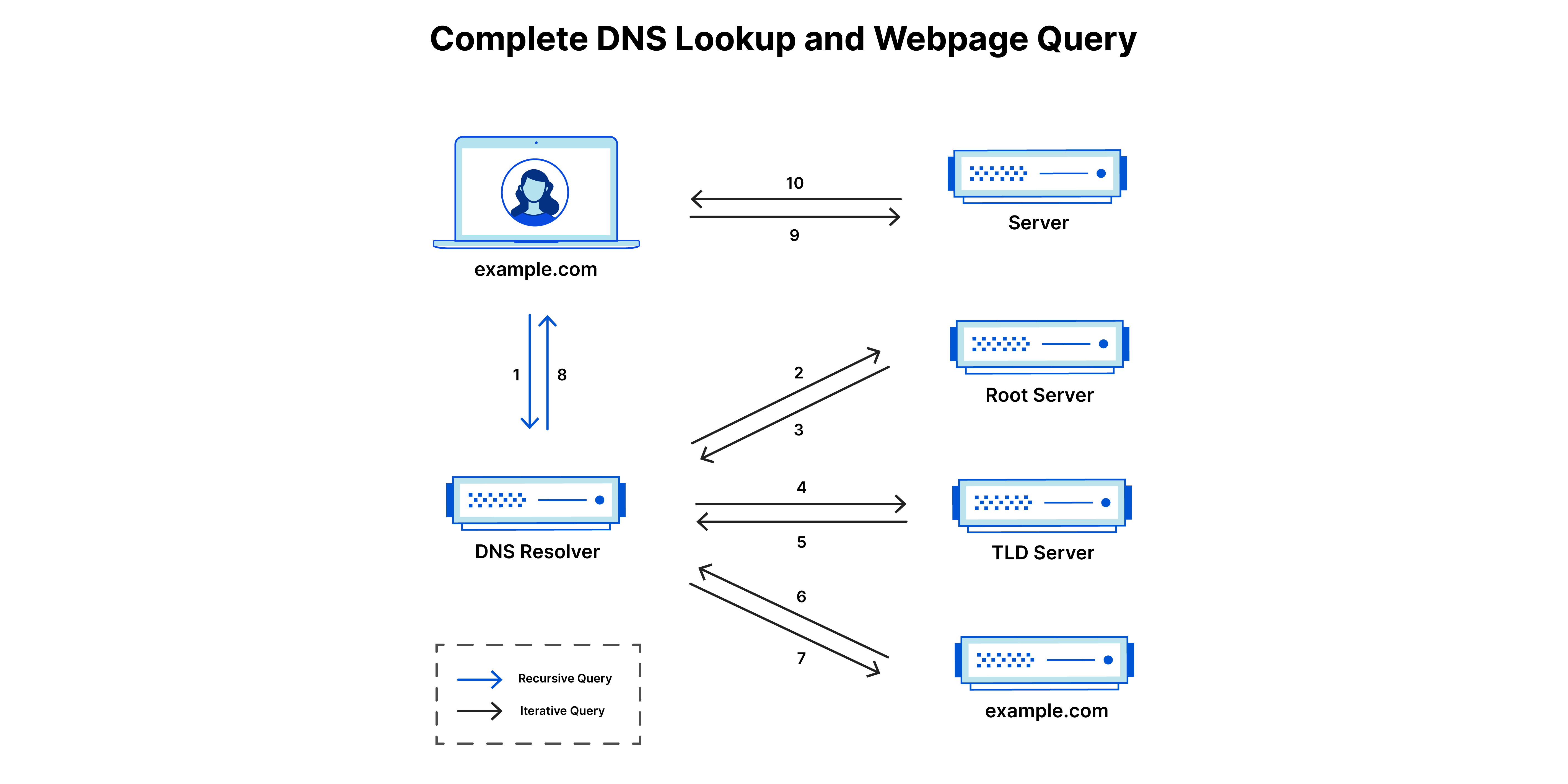Behind the scenes of Domain Name System (DNS) Server
The domain name system DNS is a naming database in which internet domain names are located and translated into Internet Protocol (IP) addresses.
What is DNS?
The Domain name system (DNS) is a naming database in which Internet domain names are located and translated into Internet Protocol (IP) addresses. The domain name system maps the name people use to find a website to the IP address that a computer uses to locate that website.

In Layman Terms
The Domain Name System (DNS) is the phonebook of the Internet. Humans access information online through domain names, such as google.com or hashnode.com.These human-readable names are mapped to the IP Address. Web browsers interact through Internet Protocol (IP) addresses. DNS translates domain names to IP addresses so browsers can load websites or resources without memorizing the IP address.
An IP address is given to each device on the Internet, and that address is necessary to find the appropriate Internet device - like a street address is used to find a particular home.
Before diving into further details. we need to know more about the DNS Server Levels.
Levels of DNS Server
DNS Root Servers L -1
These are the most important DNS servers on the planet, they essentially run the internet all other DNS servers, and cache results from these. There are 13 in number and they are maintained by various organizations worldwide. Each root server is prefixed with a letter from A to M so the root servers are A.root-servers.net up to M.root-servers.net. It must be noted that no server has all the records, it simply directs the requests to TLD servers.

These are the most guarded servers on the planet, even Anonymous could not take them down. Note that these 13 root servers are split up into nearly 120 different servers, that run in different countries.
Secondary DNS Servers
These are the secondary servers maintained by Governments, ISPs, and private companies like Google, and OpenDNS. These servers get stuff from the Root Servers and cache them and they feed it to us the users. These are faster than the root server because results are cached from the Root Servers.
I hope now you have got an idea about the DNS server. Now you may get a question like who maintain these DNS server & How the new Domain names are registered. Let's Dive into those details.
Adding Domain name to DNS servers?
When a new Domain name is registered through a Domain Name Registrar like Namecheap, Namecheap sends a request to ICANN, ICANN charges a registration fee based on the TLD and directs the TLD server to add a new entry.
Top-level Domain names(TLD) are as follows :
Country-code top-level domains (ccTLD): Only two letters allowed Eg:- .in,.tk, etc.
Internationalized country code top-level domains (IDN ccTLD) (supports non-Latin character set)
Generic top-level domains (gTLD): more than three letters allowed Eg:- .aero, .info, .com infrastructure top-level domain (.arpa)
Each TLD has its own server, for example, .com is managed by Verisign(it also manages .net). So the new domain name is added to Verisign servers and then cached by secondary DNS servers, this causes a small delay. Verisign also charges some money. You will see that the cost of registering a domain name differs based on the TLD, this is because they are held by different companies.
How does a webpage load in the browser?

A user types ‘example.com’ into a web browser and the query travels into the Internet and is received by a DNS recursive resolver.
The resolver then queries a DNS root nameserver (.).
The root server then responds to the resolver with the address of a Top Level Domain (TLD) DNS server (such as .com or .net), which stores the information for its domains.
When searching for example.com, our request is pointed toward the .com TLD.
The resolver then makes a request to the .com TLD.
The TLD server then responds with the IP address of the domain’s nameserver, example.com.
Lastly, the recursive resolver sends a query to the domain’s nameserver.
The IP address for example.com is then returned to the resolver from the nameserver. The DNS resolver then responds to the web browser with the IP address of the domain requested initially.
Once the 8 steps of the DNS lookup have returned the IP address for example.com,
The browser is able to make the request for the web page: The browser makes an HTTP request to the IP address. The server at that IP returns the webpage to be rendered in the browser.
Conclusion
The DNS is responsible for almost everything connected to the Internet, and as with everything, the root system supports the branches.
I hope you got valuable information today. For more content like this like & share in your communities.

